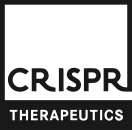Some Of OurIn-licensed Patent Applications Are Subject To Priority Disputes And Inventorship Disputes. Our Owned AndIn-Licensed Patents And Other Intellectual Property May Be Subject To Further Priority Disputes Or To Inventorship Disputes And Similar Proceedings. If We Or Our Licensors Are Unsuccessful In Any Of These Proceedings, We May Be Required To Obtain Licenses From Third Parties, Which May Not Be Available On Commercially Reasonable Terms Or At All, Or To Cease The Development, Manufacture, And Commercialization Of One Or More Of The Product Candidates We May Develop, Which Could Have A Material Adverse Impact On Our Business.
In January 2016, at our request, the USPTO declared an interference between one of the pending U.S. patent applications we licensed from Dr. Charpentier and twelve issued U.S. patents, and subsequently added one U.S. patent application, owned jointly by the Broad Institute and Massachusetts Institute of Technology and, in some instances, the President and Fellows of Harvard College, collectively referred to as the Broad. An interference is a proceeding conducted at the USPTO by the Patent Trial and Appeal Board, or PTAB, to determine which party was the first to invent subject matter claimed by both of these parties. There were two parties to this interference. Because our application was filed first, the USPTO designated Dr. Charpentier, the Regents of the University of California, or California, and the University of Vienna, or Vienna, collectively as “Senior Party” and designated Broad as “Junior Party.” Following motions by the parties and other procedural matters, the PTAB concluded in February 2017 that the declared interference should be dismissed because the claim sets of the two parties were not directed to the same patentable invention in accordance with the PTAB’stwo-way test for patent interferences. In particular, the Junior Party’s claims in the interference were all limited to uses in eukaryotic cells, while the Senior Party’s claims in the interference were not limited to uses in eukaryotic cells but included uses in all settings. In April 2017, the Senior Party appealed the PTAB decision to the Federal Circuit, seeking review and reversal of the PTAB’s February 2017 decision, which terminated the interference without determining which inventors actually invented the use of the CRISPR/Cas9 genome editing technology in eukaryotic cells. On September 10, 2018, the Federal Circuit affirmed the PTAB’s decision. The Federal Circuit, like the PTAB, did not decide whether UC or the Broad actually first invented the CRISPR/Cas9 genome editing technology. The Federal Circuit opinion also does not preclude other proceedings, either at the USPTO or in the courts, to determine which research group is the actual inventor and, thus, the proper owner of the technology.
In parallel, either party can pursue and has pursued existing or new patent applications in the U.S. and elsewhere. For example, during the interference, one of the Junior Party’s patent applications (U.S. Serial No. 14/523,799) issued as U.S. Patent No. 9,840,713 on December 12, 2017. Also, for example, during the interference, one of the Senior Party’s patent applications (U.S. Serial No. 14/685,502) issued as U.S. Patent No. 10,000,772 on June 19, 2018. Going forward, either party as well as other parties could seek a new interference related to the uses of the technology in eukaryotic cells or other aspects of the technology, and any existing or new patents could be the subject of other challenges to their validity of enforceability. In the context of a second interference or in other proceedings, a determination could be reached regarding that the Senior Party was not the first to invent, or it could be concluded that the contested subject matter is not patentable to the Senior Party and is patentable to the Junior Party, which in this case could preclude our U.S. patent applications from issuing as patents, in which case the proceedings would result in our losing the right to protect core innovations and our freedom to practice our core gene editing technology. If there is a second interference, either party can again appeal an adverse decision to the U.S. Court of Appeals for the Federal Circuit. In any case, it may be years before there is a final determination on priority. Pursuant to the terms of the license agreement with Dr. Charpentier, we are responsible for covering or reimbursing Dr. Charpentier’s patent prosecution defense and related costs associated with ourin-licensed technology.
Furthermore, we may be involved in other interference proceedings or other disputes in the future. For example, Toolgen Inc., or Toolgen, filed Suggestions of Interference in the USPTO on April 13, 2015, and December 3, 2015, suggesting that they believe some of the claims in pending U.S. applications owned by Toolgen (U.S. Serial No. 14/685,568 and U.S. Serial No. 14/685,510, respectively) interfere with certain claims in five of the Broad patents currently involved in the interference with Dr. Charpentier, California and Vienna. The USPTO may, in the future, declare an interference between our patent application and one or more Toolgen
S-42
